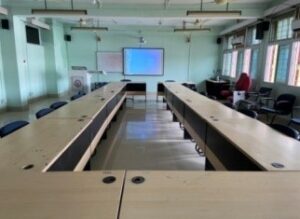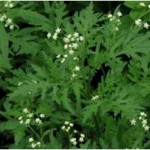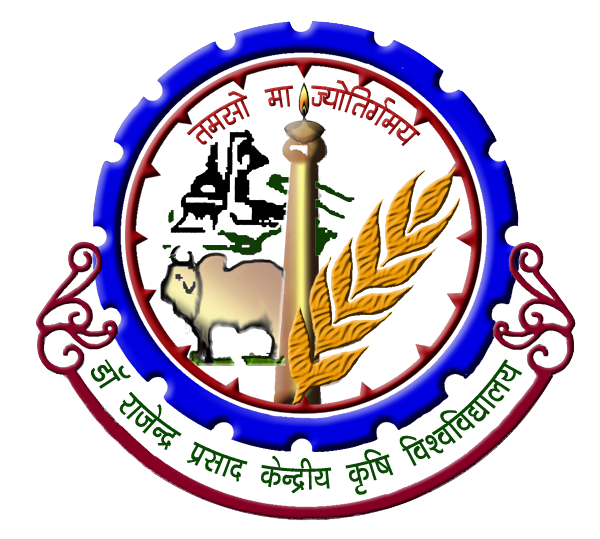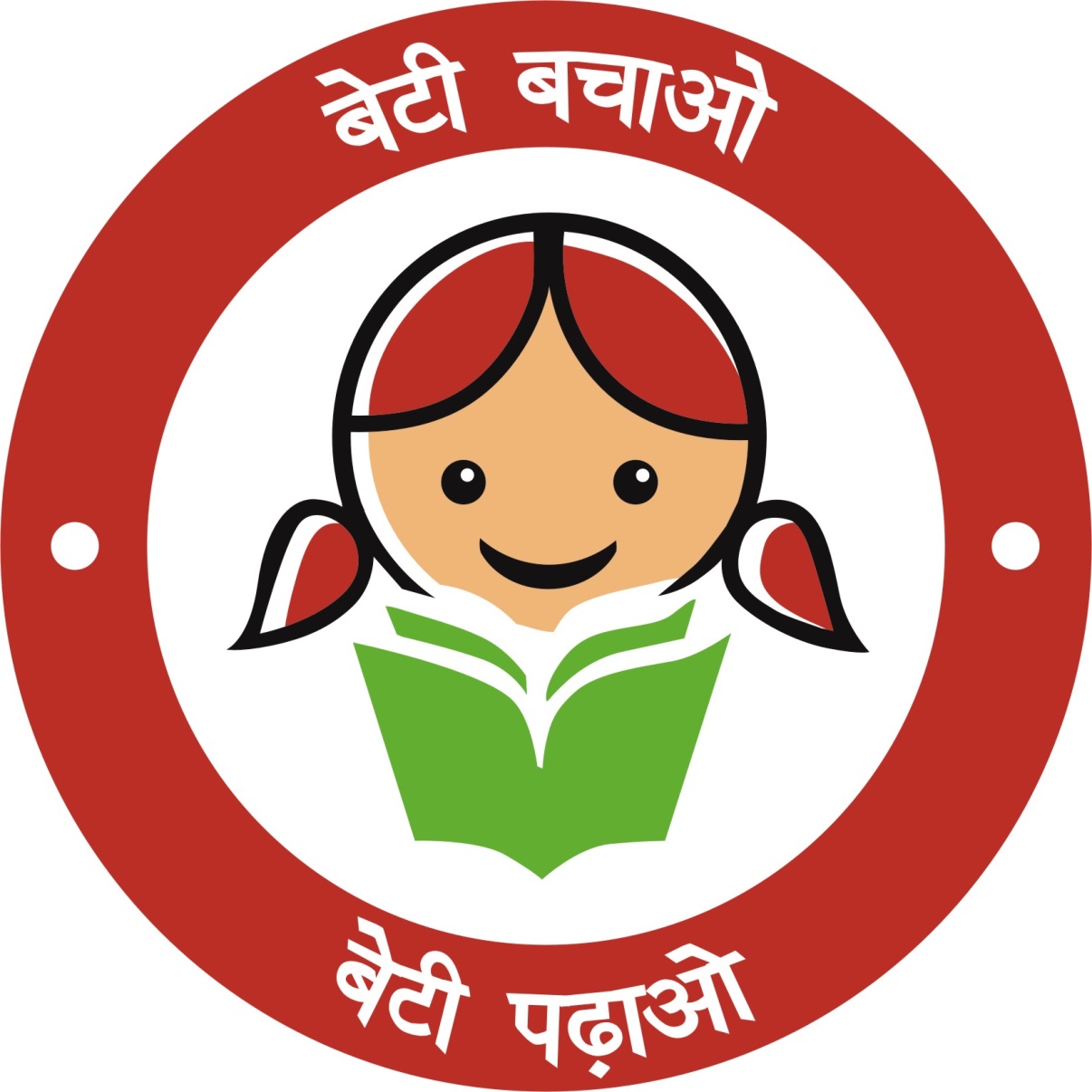About the Department
After establishment of RAU, post-graduate teaching programme was started in the year 1972 at Dholi campus of RAU which was later shifted to main campus at Pusa during 1980. In the beginning P.G. teaching was started with 08 students. Keeping in view the large requirements of the Agronomist for various sectors the intake capacity was enhanced to 22 (+2 in-service) students per year. Doctoral programme was started in the year 1980 with in-take capacity of 04 students per year later enhance to 05 (+2 in-service).
It played a pivotal role in providing linkage to allied department and constituent colleges of the University. The department has excellent infrastructure of well-equipped laboratories and research farm. These are well supported by technical and field staff for proper conduction of research as well as farm practical.
Vision:
To develop viable crop & cropping system and their production technologies to ensure round year income of farmers.
Mandate:
- To provide best teaching and research environment to students of M.Sc. and Ph.D.
- To develop agronomical technologies to fulfill the requirement of farmers based on their feedback.
Objectives/Goals:
The department of Agronomy was established in the year 1972 with the following objectives:
- Post Graduate teaching and research guidance
- To conduct research and develop agronomic practices for different crops
- Extension of developed technology through:
- Front Line Demonstration
- Direct interaction with farmers and extension officers at the Institute or in villages
- Publication of extension material on production technologies
Degrees Offered
| S. No. | Degree Offered | Subject/ Discipline | No. of Seats | Eligibility Qualifications |
| i | M. Sc. (Ag) | Agronomy | 22+04* | B.Sc. (Ag.) or B.Sc. (Hons.) Agriculture |
| ii | Ph.D. | Agronomy | 05+02* | M. Sc. (Ag.) Agronomy |
Facilities and Infrastructure
The Department of Agronomy has one smart classrooms and one seminar room with digital podium facilities in both room to conduct regular classes and seminars (Synopsis, Master& Doctoral and thesis) of M.Sc and Ph. D programme. Besides, the department has five well equipped laboratories to facilitate the research programme & practical classes and one field laboratory. Details of infra structure available in the Department is given below:
- Lecture Hall with Digital Podium
- Conference Hall with Digital Podium
- PG Laboratory – I (Physical and Microbiological Laboratory)
- PG Laboratory– II (Chemical Laboratory)
- Specialized Lab at centre for Advanced Climate Change and Water Management
- Field Laboratory- (1. Modern IFS model, 2. Integrated Zero budget Farming System, 3. Integrated Organic Farming System) 03
 |  |  |
| Agronomy Lab | Lecture Room | Seminar Hall |
Achievements
I. Varieties/ Technologies
- Paired row planting of pigeonpea (45cm) – 90 cm + urdbean in 2:2 ratio. Released from 8th research council Kharif 2020 held at Pusa during June 11-16, 2020. Proceeding 8th reaearch council (Kharif) 2020, Page 3.
- Developed irrigation infrastructure including underground pipeline and pump house at Saidpur ghat, Distt. Sitamarhi in 13 farmers’ field under TSP head.
- Develop package and practices for CoSe 16437 (Rajendra Ganna- 1)
- 15cm x 15 cm spacing was found statistically at par with 20 cm x 20 cm spacing. Under weed management practices, the highest net return (Rs. 56760/ha) and B:C ratio (2.32) were recorded under wheel hoe (twice) which were statistically at par with Sulfosulfuroan @ 25 g/ha fb Carfentrazone @ 20 g/ha (Rs. 52585/ha and 2.22) under system of wheat intensification.
- Sulfosulfuron + metsulfuron (Total) 0.03 +0.002 kg/ha at 5 WAS or Mesosulfuron + iodosulfuron (Atlantis) 0.012 + 0.0024 kg/ha at 5 WAS or Clodinafop + metsulfuron (Premix) (Vesta) 0.06 + 0.004 kg/ha was found effective in controlling weeds, producing higher grain yield of wheat (45.44 or 43.30 or 44.51 q/ha) and fetching the highest net return (Rs. 51136/ha or Rs. 47244/ha or Rs. 49208/ha ) and B:C ratio (2.24 or 2.05 or 2.15).
- Neem cake 200 kg/ha at sowing fb soil drenching of metalaxyl MZ 02.% at 20 DAP was found effective in controlling Orobanche shoot and producing the highest tobacco yield (23.92 q/ha) and fetching the highest net return (Rs. 342600/ha) and B:C ratio (2.20).
- Application of Bispyribac sodium 25 g/ha + Ethoxysulfuron 18.75 g/ha at 25 DAT or Pendimethalin 750 g/ha (0-3 DAT) fb bispyribac-sodium 25 g/ha (25DAT) or either Pretilachlor 750 g/ha or Pyrazosulfuron 20 g/ha (0-3 DAT) fb chlorimuron+metsulfuron (Almix) 4 g/ha (25 DAT) is quite effective in controlling weeds and obtaining higher yield of transplanted rice and fetching higher net return and B:C ratio.
- Pre-emergence application of Metribuzin 0.7 kg/ha or Pendimethalin 1.0 kg/ha at 3 DAP fb fenoxaprop 67 g/ha + Metsulfuron 4 g/ha at 45 DAP is effective in controlling weeds and producing good yield of turmeric rhizome with higher B:C ratio.
- Application of Glyphosate 0.80 + oxyfluorfen 0.2 kg/ha or Pendimethalin 1.5 kg/haat 15 DAP or hand weeding (2) or Pendimethalin 1.5 kg/ha at 3 DAP after planting but before mulching fb hand weeding at 30 DAP or oxyfluorfen 0.2 kg/ha at after planting but before mulching fb hand weeding at 30 DAP was found effective in managing weed flora with higher B:C ratio in ginger.
- Contribution in development of Rajendra Gehun 2 and Rajendra Gehun 3 (WB-02) Developed management practices of late sown wheat variety Rajendra Gehun 2
- Developed management practices of wheat variety Rajendra Gehun 3 (WB-02)
- Soil application of hydrogel @ 2.5 Kg/ha along with two folilar sprays of salicylic acid @ 200 ppm at flower initiation and siliquae formation stage is recommended for obtaining sustainable higher yield of rapessed- mustard under rainfed conditions in al five zones except Zone-I. Proceedings 27th Annual Group Meeting of Rapeseed- Mustard Research Workers
- The application of fertilizers on soil test basis i.e. (P:200 Kg N, 100 Kg P2O5 , 100 Kg. K2O, 25 Kg ZnSO4, 40 Kg S & R: 170 Kg N, 50 Kg P2O5, 60 Kg K2O) was found suitable for maintaining soil fertility, enhancing yield and quality of cane and getting higher returns in calcareous soil of Bihar.
- Conventional 3-bud set planting was superior over primed and unprimed cane node with respect to tillers, NMC and ratoon yield.
- Sulfosulfuron+ metsulfuron (Total) 0.03+0.002 kg/ha at 5 WAS or Mesosulfuron + iodosulfuron (Atlantis) 0.012+0.0024 Kg/ha at 5 WAS or Clodinafop + metsulfuron (Premix) (Vesta) 0.06+0.004 Kg/ha was found effective in controlling complex, weed flora in wheat producing higher again yield (45.44 or 43.30 or 44.51 q/ha) and fetching the highest net return (Rs. 51136/ha or Rs. 47244/ha or Rs. 49208/ha) and B:C ratio (2.24 or 2.05 or 2.15).
- In system of wheat intensification, 15 cm x 15 cm spacing was found statistically at par with 20 cm x 20 cm spacing. Under weed management practices, the highest net return (Rs. 56760/ha) and B:C ratio (2.32) were recorded under wheel hoe (twice) which were statistically at par with Sulfosulfuroan @ 25 g/ha followed by Carfentrazone @ 20 g/ha (Rs. 52585/ha and 2.22).
- Boron and Sulphur deficiency needs to be addressed for harnessing the yield potential of the crops.
- Ready reckoners for fertilizer recommendations in mustard and barley under integrated nutrient management have been developed.
- Compost+ crop residues could save 50% recommend dose of NPK i.e. 60 Kg N, 30 Kg P2O5 and 20 Kg K2O/ha in wheat.
- In potato in-line drip irrigation should be followed at the operating pressure of 1.4 for higher tuber yield and WUE.
- 3 Days after disappearance of pounded water uđnder different water regimes and application of Pendimethalin 1 kg/ha (PE) bispyribac sodium fbbispyribac- sodium 25 g/ha at 20DAS or Pendimethalin 1 kg/ha (PE) Chlorimuron –Metsulfuron 4 g/ha at 20DAS or Chlorimuron + Metsulfuron 4 g/ha at 20 DAS was found equally effective for reducing the weed count and weed dry weight and producing similar rice yield and fetching higher net return and B:C ratio to that of weed free (HW at 25 and 45 DAS) under direct seeded condition.
- 50% RDN through inorganic source + 50% RDN through vermin compost or 75% RDN through inorganic source + 25% RDN through vermin compost and application of Pretilachlor 1.5 kg/ha (P.E.) + Bispyribac sodium 20 g/ha at 20 DAT or Pretilachlor 1.5 kg/ha (P.E.)+ 1 HW at 20 DAT were found equally effective for reducing the weed count and weed dry weight and producing similar aromatic rice yield and fetching higher net return and B:C ratio to that of weed free (HW at 20 and 40 DAT).
- Application of Pendimethalin 1.0 kg/ha as PE+ quizalofop-etgtk 50 g/ga as POE at 20-25 DAS or Imazethapyr 100 g/ha as PE+ fenoxaprop 100 g/ha as POE at 20-25 DAS was found most effective for reducing weed count and weed dry weight and producing higher soybean yield and fetching higher net return and B:C ratio.
- Rice-Maize + Potato- Sesbania (green manure) cropping sequence was found suitable for higher system productivity and profitability. Rice-Potato-Groundnut and Rice-Mize+Pea (green pods) could also be a viable alternative cropping sequence with higher B:C ratio under Rice-Maize+ Pea (green pods). Irrigation scheduling at IW/CPE ratio of 1.2 generated highest system productivity and net income. However, B:C ratio was at par with 1.01 W/CPE.
- Drip irrigation is the most effective water management option for energy requirement and carbon emission reduction. The water management option which includes combination of sprinkler, drip and conventional irrigation seems to be the most suitable and feasible alternative for Bihar state. Renewable sources of energy like, solar, wind and biofuels may be encouraged to reduce carbon dioxide emissions.
- Direct seeding of paddy by drum seeder is varietals responsive technology with proper weed management and optimization of seed rate. Calibration of drum seeder at different soaking time for optimum seed rate is essential. The drum seeder should be calibrated for particular seed variety before use.
- Application of Bisphribac sodium 25 g/ha + Ethoxysulfuron 18.75% g/ha at 25 DAT or Pendimethalin 750 g/ha (0-3 DAT) followed by Bispyribac- sodium 25 g/ha (25 DAT) or either Pretilachlor 750 g/ha or Pyrazosulfuron 20 g/ha (0-3 DAT) followed by chlorimuron+metsulfuron (Almix) 4 g/ha (25 DAT) is quite effective in controlling weeds and obtaining higher yield of transplanted rice and fetching higher net return and B:C ratio.
- Application of Glyphosate 0.80 kg/ha orPendimethalin 1.5 kg/ha at 15 DAP or two hand weeding or Pendimethalin 1.5 kg/ha at 3 DAP but before mulching followed by hand weeding at 30 DAP or oxyfluorfen 0.2 kg/ha after planting but before mulching followed by hand weeding at 30 DAP was found effective in managing weed flora with higher B:C ratio in ginger.
- Pre-emergence application of Metribuzin 0.7 kg/ha or Pendimethalin 1.0 kg/ha at 3 DAP followed by fenoxaprop 67 g/ha + Metsulfuron 4 g/ha at 45 DAP is effective in controlling weeds and producing good yield of turmeric rhizome with higher B:C ratio.
- Spacing of 15 cm X 15 cm was found best for higher grain yield and yield attributes of wheat under System of Wheat Intensification (SWI).
- Foliar application of 1% KNO2 at50% flowering and at 50% pod filling stage was found suitable for mitigating the moisture stress and enhancing the profitability and productivity of mustard under rainfed condition.
- Fertilizer doses of 60:40:20 kg N:P:K/ha was found to be optimum dose for safflower under irrigated condition.
- Site specific soil test based target yield NPK+S+limiting micro-nutrients + 5 FYM/ha+crop residue incorporation with Trichoderma viride was worked out to be ecologically sustainable and economically viable treatment under Potato- Sunflower cropping sequence.
- For better crop yield, optimum sowing window of wheat should be around 25th November.
- To get maximum productivity from sugarcane variety BO 153, Crop should be planted with row spacing of 90 cm: 120 cm (paired now).
- In sugarcane + wheat intercropping system, accommodation of 3 rows of wheat between two rows of sugarcane recorded higher sugarcane equivalent yield (106.1 t/ha) followed in order by wheat sown on 15th November late sugarcane and FIRB sowing of wheat on 15th November + sugarcane planted in furrow during 3rd week of February.
- Application of rice straw @ 5 t/ha as mulch just after sowing the crop showed significantly positive response on growth and tuber yield of potato under low water availability condition.
II. Faculty Awards and honours
| Year | Details |
| 2015-16 |
|
| 2016-17 |
|
| 2017-18 |
|
| 2018-19 |
|
| 2019-20 |
|
III. Research activities: National & International projects with details of PI/ Co-PI:
1. AICRP on Rice – Dr. B. Pramanick work as Co-PI
2. AICRP on Wheat- Dr. Dharminder work as Co-PI
3. AICRP on FCU- Dr. Gangadhar Nanda work as Co-PI
4. AICRP on IWM Dr. Rajan Kumar work as Co-PI
5. AICRP on Maize Dr. K. Sapna as Co-PI
6. Research Projects handling as PI/Co-PI Dr. R. K. Jha
I. Climate Resilient Agriculture Programme
II. Scaling up Climate Smart Agriculture through mainstreaming Climate Smart Villages in Bihar
III. Enhancing System productivity of rice-wheat cropping system through assured irrigation and timely sowing
IV. Creation of Seed Hubs for increasing Indigenous seed production of Pulses in India
V. IARI-KVK Post Office linkage
VI. National Initiative on Climate Resilient Agriculture/National Innovation on Climate Resilient Agriculture (NICRA)
VII. Nutrient Expert Trial on Wheat
VIII.Nutrient Expert Trial on Maize
IV) Publications:
i) Technical Bulletins:
SRI Vidhi Se dhan Ki Kheti- Dr. Y. Singh, Dharminder, Supriya kumara, Manoj Kumar Singh and Rubi Sah. Published by- Center for World Solidirity, Sikandrabad (India).
ii) Text Books:
- Ahmad, E., Das, S., Thakur, M.B., Tigga, A.S., Ahmad, R., Kumar, R., Kumar, S., Kumar, Sunil, Prasad, R., Kumar, M., Navnit Kumar., Choudhary, V.K., Prabhakar, M., Bhushan, S. and Kumar, S.B. 2017. Agri- Horti Technological Innovations. 182 p. Parmar Publisher and Distributors, Dhanbad, Jharkhand, India ISBN: 978-81-925875- 5-4 (Edited Book)
- Anil Kumar, Navnit Kumar, S.N. Singh, Lalita Rana, Nishi Keshari and Ajeet Kumar. 2021. Sugarcane pests and diseases management. Brillion publishing, New Delhi. Pages.222.
- D. K. Sachan, Mundhe Sachin & Rama Shankar Singh 2021. Introductory Agricultural Meteorology published by Parmar Publication, 854 KG Ashram, Bhuinphod, Govindpur Road, Dhanbad 828109 (Jharkhand)
- Jitendra Marskole, Sriram Osari, R. S. Singh 2020. Fact in Agronomy Published by Weser Books, N0.79737 Aussere, Weberstr.57 02763, Zittau, Germany.
- Kumari, G., Navnit Kumar., and Mishra, B. 2020. Integrated Nutrient Management for Yield Sustainability in Acidic Soils. 132 p. Integrated Publications (Eds. I), Delhi, India Paper back ISBN: 978-81-947809-04-6
- Maitra, S. and Pramanick, B. 2020. Advanced Agriculture. New Delhi Publishers, New Delhi, pp 444 (ISBN No. 978-93-88879-99-6)
- Navnit Kumar., Kumari, G. And Sinha, U.P. (Ed.) 2020. Phosphorus and Sulphur Nutrition for Sugarcane. 143 p. Akinik Publications, Delhi, India Paper back ISBN: 978-93-89680-03-4 E. Book ISBN: 978-93-8968-04-1
- Pandhurang Bobade, D. R. Agashe, Rama Shankar Singh. Model Qus & Ans In Agricultural Meteorology. Published by Weser Books, N0.79737 Aussere, Weberstr.57 02763, Zittau, Germany.
- R.S. Singh (2019) Co-authored a Souvenir cum Lead/Abstract Proceedings Book for 3rd National management Summit & Research Conference (NMSRC) on 13th& 14thDecember, 2019 at International School of Management, Patna (Bihar).
- Rajan Kumar, 2019. “Agri-Innovations And Cropping System Practices For Sustainability” ISBN :978-81-941613-7-0, Published by: Parmar Publication 854, KG Ashram, Bhuinphod, Govindpur Road, Dhanbad-828109,Jharkhand
- Rama Shankar Singh and Vivek Yadav 2020 Pulses In Cropping Systems by. Published by Weser Books, N0.79737 Aussere, Weberstr.57 02763, Zittau, Germany.
- mers Orientation Towards Smart Agriculture published by Weser books. No.79737, Aussere, Weberster.5702763, Zittau, Germany.
- Roy, D.K. 2019. Manures and Fertilizers published by Parmar publication, ISBN: 978-81-941735-0-2.
- S. P. Zade, P. G. Gourkhede, P. H. Vaidya, Rama Shankar Singh, Sanjeev Kumar Sinha 2021 Problem soils and their management practices published by parmar publication, 854 KG Ashram, Bhuinphod, Govindpur Road, Dhanbad 828109 (Jharkhand).
- Samar Pal Singh, R.A. Singh and Biswajit Pramanick. 2017. Response of late sown mustard to different nutrient combinations. Lap Lambert Publisher, Germany, ISBN No. 978-3-330-03072-5)
- Singh, A., Pandey,I. B. Kumar, A. Kumar, S and Anand, A. Organic Farming for Sustainable Agriculture : In book Organic Farming for Agriculture and Horticulture. Biotech Book, New, Delhi.
- Singh, S.P., Singh, R.A. and Pramanick, B. 2017. Response of late sown mustard to different nutrient combinations, LAP LAMBERT Academic Publishing, Germany, pp 101 (ISBN No. 978-3-330-03072-5).
- Upadhaya, B. And Navnit Kumar (Ed.) 2019. Plant Growth Regulators & Sugarcane Production. 103 p. Lap Lambert Academic Publishing. ISBN: 978-613-9- 47463-9
- Vimal Raj Yadav, V. Pratap Singh and Biswajit Pramanick. 2017. Integrated weed management in transplanted paddy. Lap Lambert Publisher, Germany, ISBN No. 978-3-330-08562-6)
- Vikram Bharti, Dharminder, Kaushal Kishor, Uday kumar, Sbodh kumar, R.K. Srivastava and Md. Parwaiz Alam. 2021. Ready Reckoner of Agronomy. Parmar Publication, 854, KG Ashram, Bhuinphod, Govindpur Road, Dhanbad-828109, Jharkhand.
- Yadav, V.R., Singh, V.P. and Pramanick, B. 2017. Integrated weed management transplanted paddy, LAP Academic Publishing, Germany, pp 107 (ISBN No. 978-3-330-08562-6)
iii) Lab Manuals: Roy, D.K., Dharminder and Nandan, R. (2017). One “Practical manual on weed management” was published by publication division, RPCAU, Pusa.
Faculty
| Name | Designation | Contact No. | E-mail Id |
|---|---|---|---|
| Dr. Devendra Singh | Professor & Head | 6287797185 | head.agron@rpcau.ac.in |
| Dr. Dhirendra Kumar Roy | Professor | 9430181071 | dhirendra.roy@rpcau.ac.in |
| Dr. S.K. Chaudhary | Professor | 9431834082 | skc@rpcau.ac.in |
| Dr. Ratnesh Kr. Jha | Professor | 9430804115 / 7759935426 | ratnesh@rpcau.ac.in |
| Dr. Rajan Kumar | Assistant Professor | 9430800862 | rajan.kumar@rpcau.ac.in |
| Dr. Dharminder | Assistant Professor | 8092308584 / 8789406171 | dharminder@rpcau.ac.in |
| Dr. Kumari Sapna | Assistant Professor | 9798497550 | sapna@rpcau.ac.in |
| Dr. Biswajit Pramanick | Assistant Professor | 8630795237 | biswajit@rpcau.ac.in |
| Mr. Kaushal Kishor | Assistant Professor | 6203641073/ 8987235645 | kaushal.kishor@rpcau.ac.in |
Measures for control of Parthenium (Parthenium hyterophorus)
Chemical measures: Application of Glyphosate 1 % or Metribuzine 0.3 % solution before flowering stage are quite  effective for controlling Parthenium weed in agricultural land.
effective for controlling Parthenium weed in agricultural land.
Biological measures: Mexican beetle (Zygrogramma bicolorata) should be released on the Parthenium weed during rainy season.
Cultural measures: Uprooting of Parthenium before its flowering should be done to minimize its population which could be utilized in compost preparation. Plantation of marigold plant may be done to check the population of Parthenium weed nearby residential areas or Cassia tora in the area covered by Parthenium.

